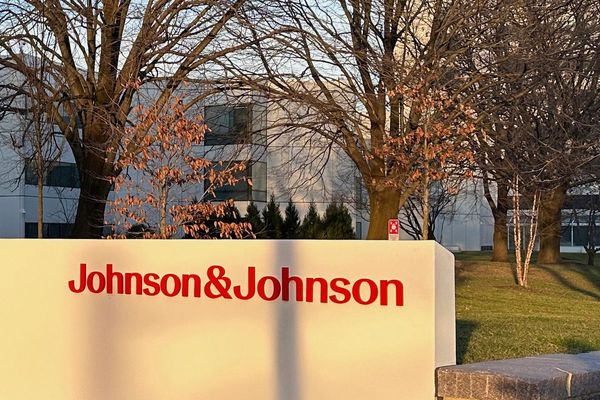When you “grocery shop near me,” you’re entering a carefully orchestrated environment. Supermarkets and the big brands they carry employ sophisticated strategies to influence your spending. These tactics are designed to be subtle, playing on psychology and habit. While offering convenience and choice, the modern grocery store is also engineered to maximize profits. Becoming aware of these “secrets” or less-obvious influences can empower you to be a more discerning and budget-conscious shopper. Here are 12 things big brands and supermarkets often hope you don’t scrutinize too closely about the cost of your local grocery run.

1. Prime Shelf Placement for High-Profit Items
Brands pay premium “slotting fees” to get their products placed at eye-level or on prominent end caps. These are the most visible spots and see the highest sales, regardless of whether the items are the best value or healthiest option. Cheaper or store-brand alternatives are often placed on higher or lower shelves.
2. The Psychology of Store Layout and Traffic Flow
Essentials like milk and eggs are usually at the back of the store. This forces you to walk past countless aisles of other products, increasing the chance of impulse buys. The entire store layout is designed to maximize your exposure to the most profitable items and promotions.
3. “Shrinkflation”: Less Product, Same Price
Big brands sometimes subtly reduce the quantity of product in a package (e.g., fewer chips in a bag, a slightly smaller cereal box) while keeping the price the same or even increasing it slightly. This “shrinkflation” is a stealthy price increase per unit that many consumers don’t notice immediately.
4. The Illusion of “Sales” and “Discounts”
Not all sales are genuine savings. Sometimes, the “original” price is inflated just before a sale to make the discount appear larger. Or, a sale price might simply be the product’s normal price at a competitor store. Always compare to be sure.
5. The Markup on Convenience and Pre-Packaged Items
You pay a significant premium for convenience. Pre-cut fruits and vegetables, individually wrapped snacks, and ready-to-eat meals cost much more per ounce or pound than their whole, unprepared counterparts. Brands bank on you paying extra for saved time.
6. Confusing Unit Pricing (or Lack Thereof)

While unit pricing (price per ounce, per 100g, etc.) is often displayed on shelf tags, it can be small or inconsistent, making true value comparisons difficult. Brands hope you’ll focus on the overall sticker price rather than the better measure of cost-effectiveness.
7. The Power of Branding and Packaging
Eye-catching packaging, familiar brand logos, and appealing marketing claims heavily influence purchasing decisions, often more than a rational assessment of price or ingredients. Brands invest heavily in this to build loyalty and justify higher prices over less-marketed store brands.
8. Loyalty Programs Are Primarily for Data Collection
While loyalty cards offer discounts, their main value to the store and brands is the vast amount of purchasing data they collect about you. This data is used for highly targeted marketing, designed to encourage you to spend more, sometimes on items you wouldn’t normally buy.
9. Impulse Buys Strategically Placed at Checkout
The checkout area is prime real estate for high-margin impulse buys like candy, gum, magazines, and cold drinks. Brands pay to be in these spots, knowing that shoppers waiting in line are susceptible to last-minute additions.
10. The Short Shelf Life of Some “Fresh” Packaged Goods
Some packaged “fresh” items, like pre-made salads or certain baked goods, may have a very short actual shelf life once you get them home, despite seeming convenient. This can lead to food waste if not consumed immediately, a cost brands don’t cover.
11. Misleading Health Claims and “Health Halos”
Packaging with terms like “natural,” “multigrain,” or “low-fat” can create a “health halo,” making products seem healthier than they are and justifying a higher price. Brands hope you won’t scrutinize the full ingredient list or nutrition panel.
12. Limited Availability of Truly Local or Small Producer Items
While some stores promote local items, shelf space is overwhelmingly dominated by big national and international brands that can afford slotting fees and meet large-scale distribution demands. This limits consumer access to a wider diversity of smaller, local producers who may offer unique value.
Shop with Your Eyes Open
The cost of “grocery shopping near me” involves more than just the prices on the shelf. It’s influenced by a complex ecosystem of brand strategies, retail psychology, and supply chain economics. Big brands and supermarkets invest heavily in understanding and shaping consumer behavior to their advantage. By becoming aware of these twelve “secrets” or subtle influences, you can navigate your local store more critically. This allows you to make choices based on genuine need and value, rather than just clever marketing, ultimately helping you control your spending and make more informed decisions.
Which of these “secrets” about grocery store and brand tactics do you find most impactful or surprising? What strategies do you use to counteract these influences when you shop? Share your insights!
Read More
9 “Buy One, Get One” Deals That Actually Cost You More in the Long Run
The Shadow Cost of Food Delivery Coupons: 12 Things Big Brands Hope You Never Learn
The post The Cost of Grocery Shopping Near Me: 12 Things Big Brands Hope You Never Learn appeared first on Grocery Coupon Guide.







